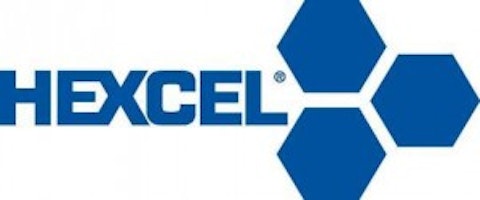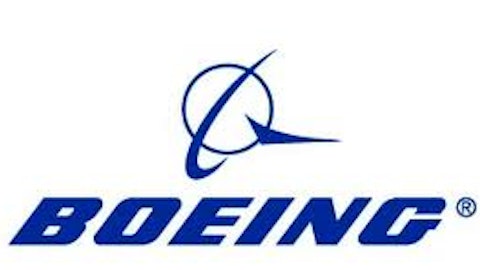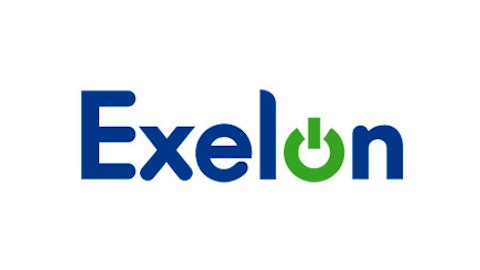The Boeing Company (NYSE:BA)’s 787 has been in the news again for catching fire. The technology in the airplane is impressive, so some troubles are to be expected. However, it’s probably a safer bet to buy high-tech aerospace suppliers like Hexcel Corporation (NYSE:HXL) and General Electric Company (NYSE:GE) instead of Boeing.
Not the same reason
At first blush, it would seem good news that the recent fire wasn’t caused by the same problem that led to the 787 being grounded for several months. However, it means that there are still problems with the aircraft that have yet to be worked out. Luckily the issues so far have been relatively small. If there is a plane crash that results in passenger deaths, The Boeing Company (NYSE:BA) will have big problems.
Boeing’s 787 Dreamliner is a revolutionary concept because of its use of new materials, like carbon fiber and modern batteries. These changes allow it to save on weight, and, thus, cut down fuel costs for customers by as much as 20%. For example, if US Airways Group, Inc. (NYSE:LCC), which spent $271 million on fuel in the first quarter, could switch to 787s overnight, it could save $200 million a year on fuel. This is why airlines are still backing the plane despite the problems.
That’s particularly true since airplanes have long operating lives. Mario Gabelli believes that 34,000 new aircraft will be needed over the next two decades. Airlines would rather own the planes that are the cheapest to operate instead of locking in high fuel costs.
Although Boeing’s revenues and earnings can be choppy because it sells large and expensive products, sales have increased in each of the last three years, reaching $81.7 billion in 2012. Earnings haven’t been as regular, but it made $5.10 a share last year. Boeing is doing well right now.
The shares are justifiably trading near all-time highs with a price to earnings ratio of around 19. That’s about two percentage points above its five-year average and means investors are expecting big things. There’s downside risk if the company doesn’t meet Wall Street’s expectations, and continued 787 problems could be a big problem.
Picks and axes

Hexcel Corporation (NYSE:HXL), for example, produces carbon fiber, structural fabrics, honeycomb, prepregs, film adhesives and sandwich panels, and composite parts and structures. The company states that its high-tech materials “are used on virtually every commercial and military aircraft produced in the western world.”
This fiber specialist’s shares have gone from the low single digits to over $35 since 2009. The top and bottom line have both advanced notably over that time, too. Earnings, for example, have almost tripled. The prospects of continued strong demand in the aviation industry is a clear plus, and has led investors to price the stock at around 22 times trailing earnings.
The shares aren’t cheap, but it is on the cusp of a revolution in the way planes are built. That should interest growth minded investors.
The power of flight
Another major supplier to the aviation industry is diversified industrial giant General Electric Company (NYSE:GE). The company is making use of ceramics in its jet engines to help reduce weight. Since engines are incredibly heavy, GE’s efforts could result in big cost saving for end customers.
General Electric Company (NYSE:GE) shares trade with a PE of around 17 and yield about 3.2%. After taking a government handout and cutting its dividend during the 2007 to 2009 recession, General Electric Company (NYSE:GE) has been refocusing around its industrial core. That’s led to top-line declines, but bottom-line growth.
The finance arm, which brought the company low during the recession, is still disproportionately large at 31% of 2012 revenues. Management is working on that and has suggested that it may spin off finance businesses that don’t support its industrial focus. Although the Aviation group only made up 14% of the company’s top-line last year, that was second only to the Power and Water division on the industrial side.
General Electric Company (NYSE:GE)’s high-tech jet engines, recovering and diversified business, and relatively low price should interest growth and income investors looking for a way to participate in the airplane revolution without taking on the risks of direct exposure.
Exposure without the exposure
Although Boeing provides direct exposure to the developments taking place in the airline industry, it also exposes investors to the risks of owning a company launching a new product in a risk-averse sector. Hexcel Corporation (NYSE:HXL) and GE both provide vital components to airplane makers and should see their top and bottom lines benefit from the same trends, but with less direct exposure.
Reuben Brewer has no position in any stocks mentioned. The Motley Fool owns shares of General Electric Company.
The article Buy 787 Suppliers, Not the Maker originally appeared on Fool.com and is written by Reuben Brewer.
Reuben is a member of The Motley Fool Blog Network — entries represent the personal opinion of the blogger and are not formally edited.
Copyright © 1995 – 2013 The Motley Fool, LLC. All rights reserved. The Motley Fool has a disclosure policy.



